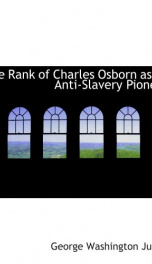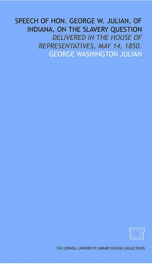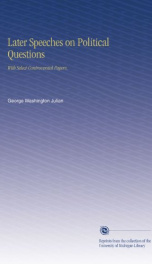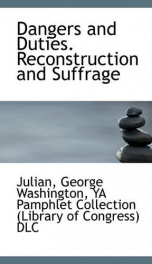political recollections 1840 to 1872

Purchase of this book includes free trial access to www.million-books.com where you can read more than a million books for free. This is an OCR edition with typos. Excerpt from book: CHAPTER IV. REMINISCENCES OF THE THIRTY-FIRST CONGRESS. Novel political complicationsThe Compromise MeasuresFirst election to CongressSketch of the " immortal nine "The speakership and Wm. J. BrownGen. Taylor and the Wil- mot provisoSlave-holding blusterCompromise resolutions of Clay, and retreat of Northern WhigsVisit to Gen. Taylor To Mr. ClayHis speechesWebster's seventh of March speechCharacter of CalhounSpeech on the slavery question. The scheme of "pacification" and "final settlement," which was launched in 1850, under the leadership of Henry Clay, constitutes one of the chief landmarks in the history of the great conflict between freedom and slavery. It was the futile attempt of legislative diplomacy to escape the fatal logic of antecedent facts. The war with Mexico, like the annexation of Texas which paved the way for it, was inspired by the lust for slave territory. No sophistry could disguise this fact, nor could its significance be overstated. The prophets of slavery saw clearly that restriction meant destruction. They girded themselves for battle on this issue, and were not at all placated by Northern disclaimers of " abolitionism," and reiterated disavowals of any right or purpose to intermeddle withslavery as the creature of State law. Its existence was menaced by the policy of confinement and ultimate suffocation ; and therefore no compromise of the pending strife over its prohibition in New Mexico, Utah and California was possible. This strife was aggravated by its peculiar relations to the dominant political parties. The sacrifice of Martin Van Buren in 1844, because of his manly letter on the annexation of Texas, had been a sore trial to his devoted friends. They could neither forgive nor forget it; and when the opportunity for revenge fi... --This text refers to the Paperback edition.
Info about the book
Author:
Series:
Unknown
ISBN:
1172537208
Rating:
4/5 (4)Your rating:
0/5
Languge:
English
Users who have this book
Users who want this book
What readers are saying
What do you think? Write your own comment on this book!
write a commentif you like political recollections 1840 to 1872 try:
Do you want to read a book that interests you? It’s EASY!
Create an account and send a request for reading to other users on the Webpage of the book!








